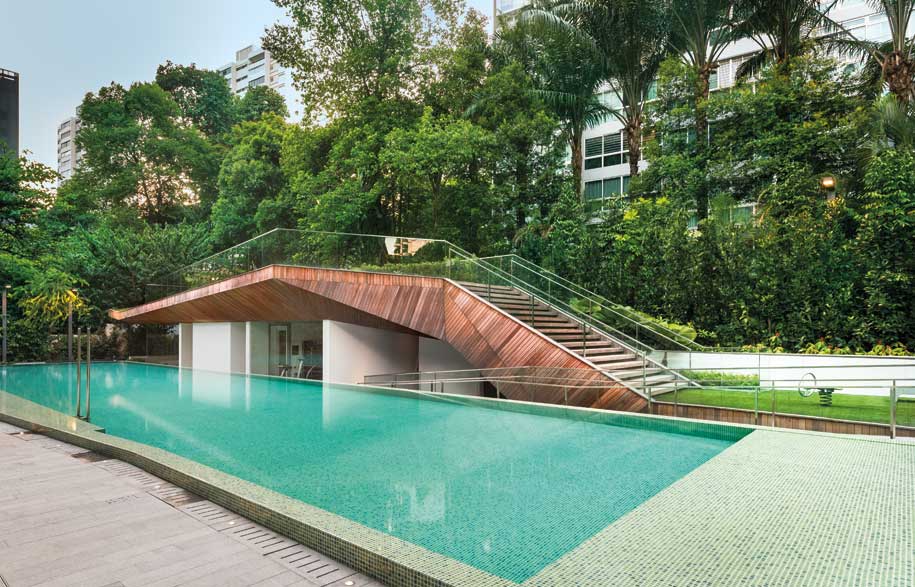Back in 2002, Renzo Piano played the regulations like…well, a piano. His wonderful Aurora Place in Sydney got the better of gross floor area limits by creating winter gardens with electronically controlled glass louvres. Were these terraces or part of the GFA? Close them for an enclosed space. Open them for an outside terrace.
In Australia, regulations are usually about stopping anyone doing anything creative. But Piano’s creative mindset turned the tables.
In Singapore, where development and innovation seem much more comfortable bedfellows, regulations are regularly modified to encourage progress.
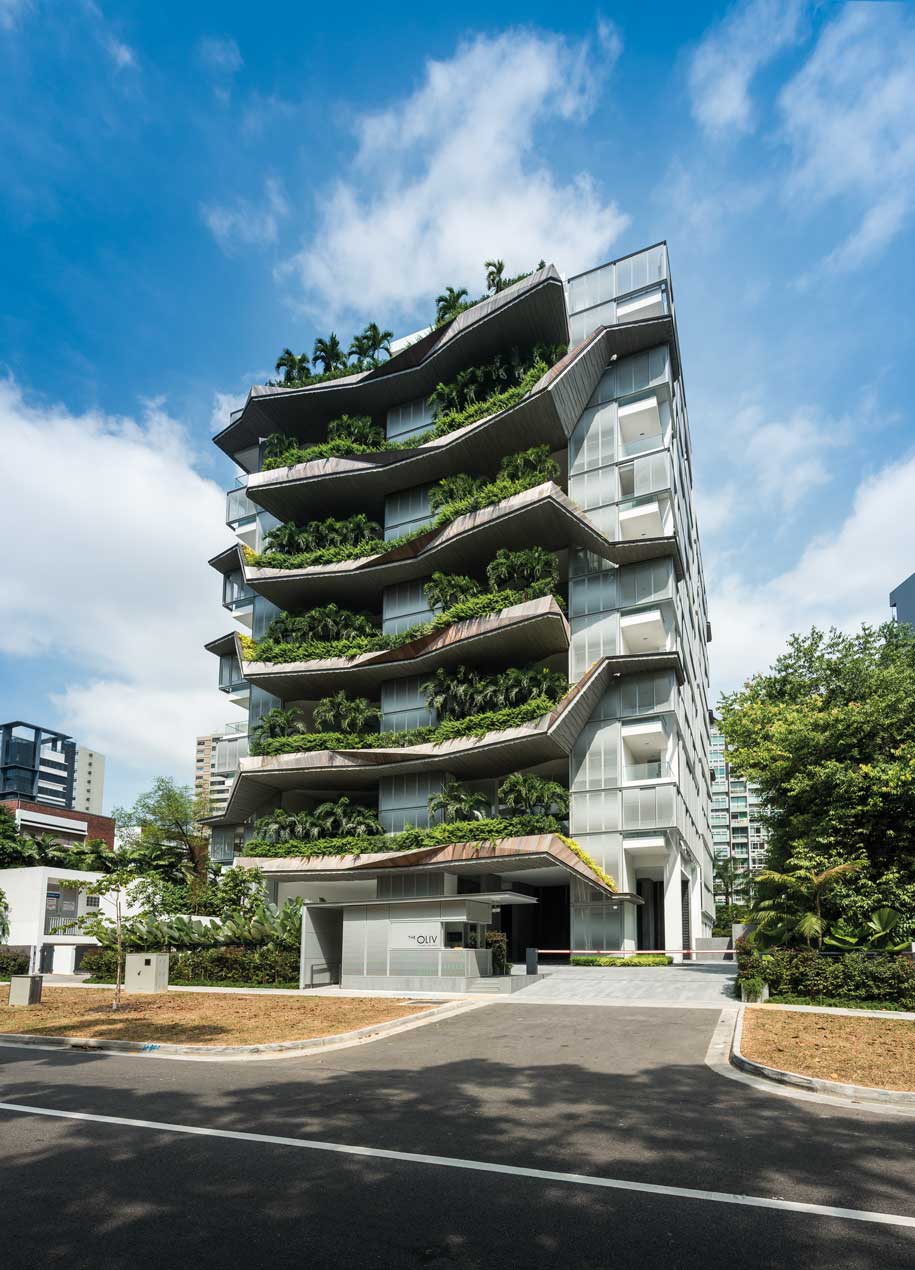
In Habitus 25, Guy Allenby looks at W Architects’ residential building, the Oliv Apartments, as an example of innovative multi-residential design.
But thereby hangs a tale – of how to work the regulations to your advantage. “The GFA,” says Mok Wei Wei, “is really quite dry and not a very fun thing to do.” He’s been doing multi-residentials since 1996 and says that the big challenge is “how do you stay alive and avoid the same ideas and same building type”.
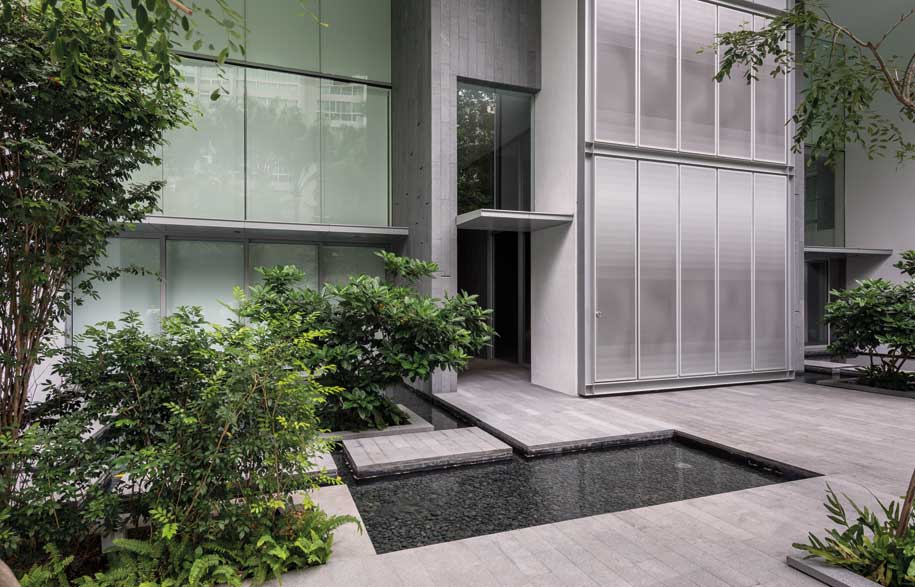
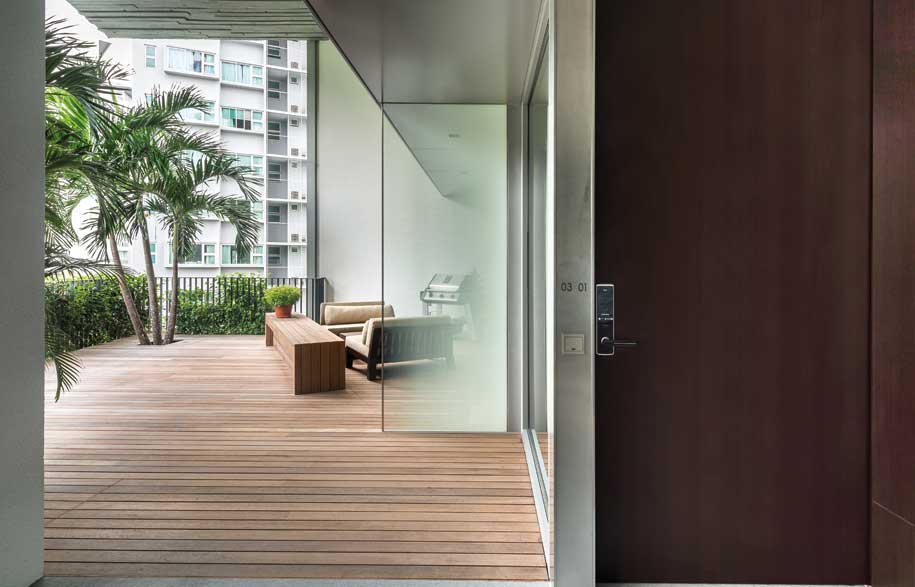
Back in 1996 there were no balconies or roof terraces because they were included as part of the GFA and no one would give up enclosed space for an open space.
So, Wei Wei experimented with curtain wall skins. Then the regulations changed to allow 10% more on top of the GFA. So along came balconies and sliding screens.
Then the regulations changed again because the authorities had gone green and wanted roof gardens, big spaces on the higher levels.
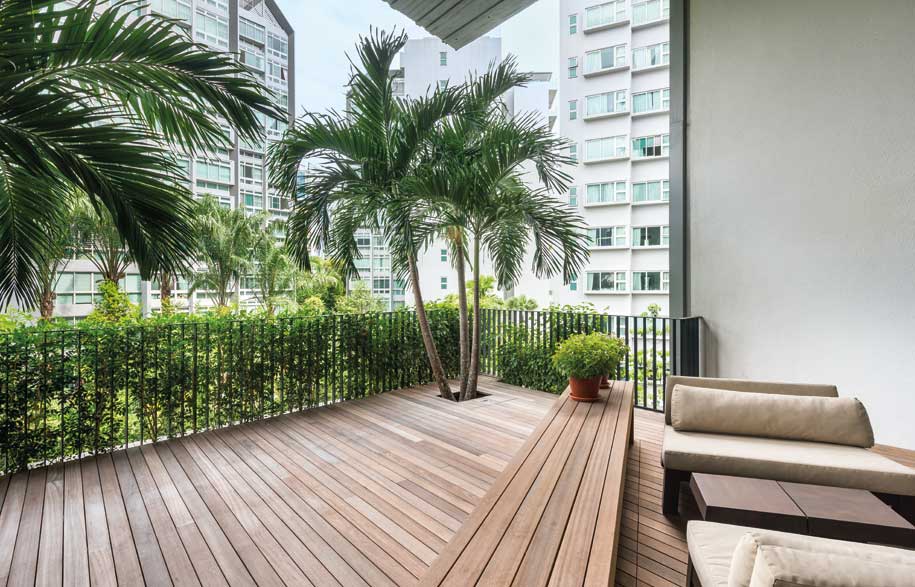
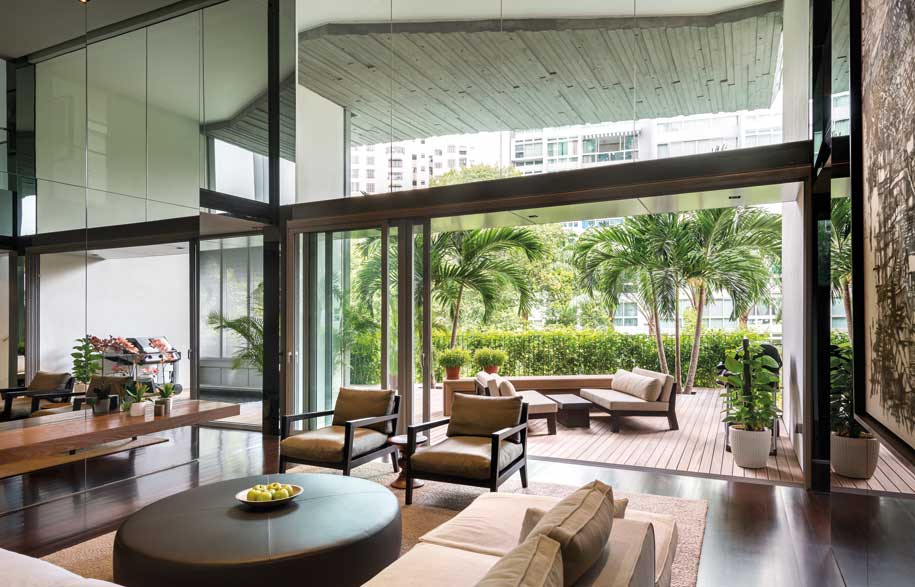
“So,” says Wei Wei, “you take 45 degrees – whatever from the soffit – and not covered by the 45 degree line, you get it free.” The trick was that it had to be communal space – private terraces are counted in the GFA.
“We literally pushed the sky terrace regulation to its limit in the sense that every two units enjoy a sky terrace (because) two units is the minimum to qualify as communal. So, you are enjoying an extra bit of terrace space in front of your apartment.”
Well, four metres, actually. That’s the recess from the balcony edge to the sliding glass doors to the apartment.
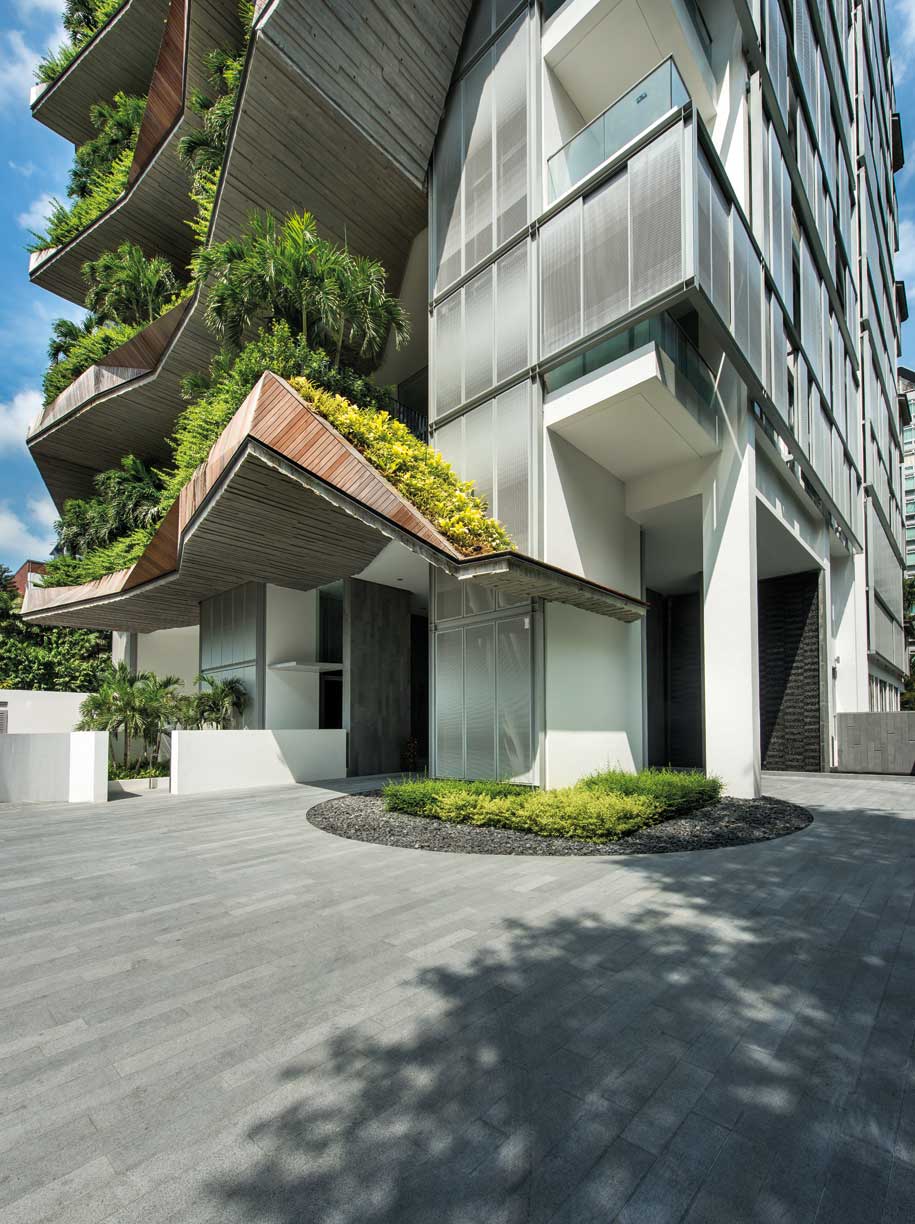
Photography by Edward Hendricks
The Oliv
theoliv.net

